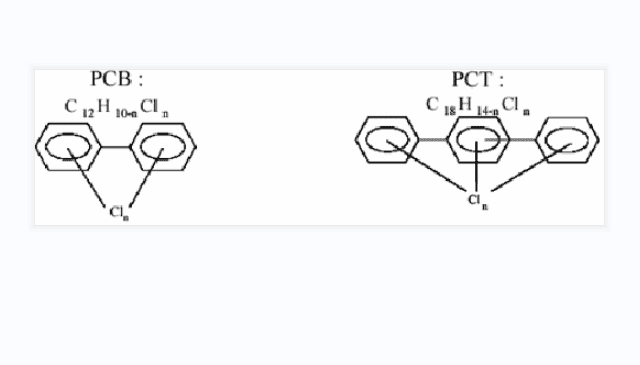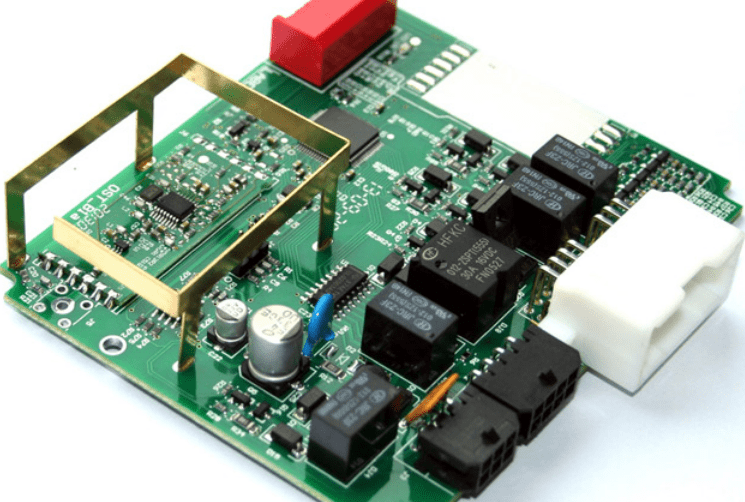PCBs and PCTs are man-made substances that were widely manufactured on a global basis during the 1930s and 1980s. They were mostly employed in lubricants, as well as electrical and hydraulic equipment. They are widespread and have been found in soil, surface and groundwater, as well as food. They are currently considered probable human carcinogens and have a variety of negative consequences for both people and animals.
In the 1970s, some nations restricted the use of PCBs and PCTs. Since 1985, their usage and promotion in Europe have been severely limited.
What are PCBS?
PCBs are a class of organic compounds created by humans that include carbon, hydrogen, and chlorine atoms. Many of PCB’s physical and chemical features stem from the quantity and placement of chlorine atoms inside the molecule. PCBs have no discernible taste or odour, and their viscosity ranges from an oil to a waxy solid.

What are PCTS?
Polychlorinated terphenyls (PCTs) have essentially identical qualities as highly chlorinated polychlorinated biphenyls (PCBs) in that they are extremely stable and bioaccumulative, and biomagnification through food webs is conceivable.
Supply of PCBS AND PCTS
Building materials, lubricants, coatings, plasticizers, inks, pesticide extenders, carbonless copy paper, paints, flame retardants, and, most often, electrical transformers and capacitors (tiny capacitors in domestic electrical equipment), where the compounds are utilized in an oil basis as an insulating fluid. Although they were widely utilized in the past, the risk caused by PCBs/PCTs much surpasses any advantages achieved from their usage.
Since 1986, the supply and use of PCB/Ts in new plants and equipment have been prohibited. Until 2010, existing equipment having minor quantities of PCBs below 500ppm (parts per million) was allowed to be used.
The main source of PCB/T emissions to air and land remains PCB-based dielectric heat transfer fluids from outdated electrical equipment (e.g. capacitors, transformers, electrical switching gear).
USES OF PCBS
They are poisonous in varying degrees and range in consistency from thin, light-coloured liquids to yellow or black waxy solids. PCBs were employed in many industrial and commercial applications because to their non-flammability, chemical stability, high boiling point, and electrical insulating qualities, including:
Because PCBs are used in so many different industries, you may find them practically anywhere, from little consumer electronics to massive pieces of machinery. Where do printed circuit boards come into play? Here are ten of the most prevalent PCB uses categorized by industry.
· Medical Products
As technology advances, exposing new possibilities, the healthcare sector is adopting an increasing number of PCBs. PCBs are found in equipment used for diagnosis, monitoring, therapy, and other purposes.
When creating medical PCBs, special care must be taken to ensure dependability since proper operation might be vital to patient health. In many circumstances, PCBs must also fulfil stringent sanitary standards, particularly those used in implants. Boards used for implants and a variety of other purposes, such as emergency room monitoring, must also be compact. As a result, many medical PCBs use high-density interconnect (HDI).
· LEDs
LEDs, or light-emitting diodes, are an increasingly popular lighting technology used for residential and commercial lighting as well as in a variety of industries, such as automotive, medical, and computer technology. LEDs are popular due to their energy efficiency, extended life, and tiny size.
One function of PCBs in LED applications is to transport heat away from the bulb. LEDs have a shorter average life when exposed to high temperatures. As a result, LED PCBs are often built of aluminium, which can transport heat better than other metals. This reduces the need for a second heat sink in a design, allowing it to be more compact.
· Industrial Machinery
The industrial sector makes extensive use of printed circuit boards. Much of the equipment at manufacturing and distribution centres, as well as other types of industrial facilities, is powered by electronic components.
PCBs used in the industrial sector must frequently be extremely powerful and long-lasting in order to endure the severe conditions found in industrial facilities. PCBs may be required to withstand severe handling, vibrating machinery, intense temperatures, or harsh chemicals. To achieve this requirement for durability, industrial PCBs may be thicker than other types of PCBs and constructed of robust metals or thermal-resistant materials. To boost longevity, industrial PCB assembly services may utilize thru-hole technology.

PCBs are used in a variety of industrial applications, including:
Electric drills and presses used in manufacturing are powered by PCB-based electronics.
PCBs are used in the components that power various sorts of industrial equipment. DC-to-AC power converters, solar power cogeneration equipment, and other items are included in this category of power equipment.
PCBs are frequently used to power equipment that measures and regulates pressure, temperature, and other variables.
As robots, industrial IoT technology, and other forms of sophisticated technology become increasingly ubiquitous, new applications for PCBs in the industrial sector emerge.
· PCBs and Everyday Electronics
PCBs are sweeping the consumer electronics industry. PCB devices are becoming a better and better option as they grow smaller and smaller, especially when the outmoded alternative is enormous, convoluted masses of wires. Smartphones and watches, Tablets, Laptops and desktop computer towers, Video game consoles, Refrigerators, and Programmable coffee machines are some of the most prominent applications of PCBs in daily electronics.
Uses of PCTS
PCT is mostly utilized in investment casting waxes and as a substitute for PCB. PCT has been detected in several environmental samples, including soil, water, shellfish, fish, seals, birds, and terrestrial animals, despite its limited use to date. It has also been found in food and paper products.
Polychlorinated terphenyls (PCTs) have nearly equivalent properties to high-chlorinated PCBs: they are exceedingly stable, and bioaccumulative, and biomagnification through food webs is possible. PCT is mostly used in investment casting waxes and as a PCB alternative. Despite its limited use to date, PCT has been found in a wide range of environmental samples, including soil, water, shellfish, fish, seals, birds, and terrestrial mammals. It has also been discovered in paper and food goods. PCT residues have been found in human tissues such as blood, liver, fat, and milk in several regions. Animal studies have revealed that the long-term harmful effects of PCT are crucial. In vertebrates, PCT has a strong inductive impact on microsomal enzymes in the liver and may induce liver damage, including tumours. Hormonal—and immunological—system disruptions have also been noted. The most serious ecological risk posed by PCT and PCB is the potential disruption of species’ reproductive systems. The use of PCT is not regulated in many countries. The use of PCT is restricted to closed systems in some countries, although the EEC is considering expanding its use.
Conclusion
PCBs and PCTs are both colourless liquids with high chemical and biological resistance. Their stability improves with chlorination degree (the more chlorine atoms in the structure, the more stable they are), and they prefer to survive in the environment. Because of their chemical components, they are extremely soluble in oil and fat. This causes them to accumulate in animal fatty tissues, where they become progressively concentrated, especially at the top of the food chain.

PCBs are categorized as probable human carcinogens because they cause a wide range of negative consequences in both animals and people, including reproductive toxicity, teratogenicity, and immunotoxicity.
Neither group of chemicals is thought to exist naturally. Their prevalence in the environment is solely attributable to industrial activities and unregulated consumption.
Comments are closed